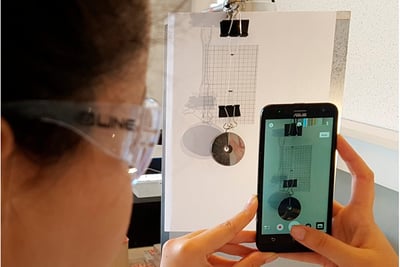Beyond my core research topics, I have also been involved in scientific dissemination and broader studies on wetting and interfacial science. These contributions reflect my interest in education, history of science, and fundamental physicochemical processes.
Education and Science Communication
My commitment to teaching and knowledge dissemination has led me to design and publish educational content. In particular, I proposed an experiment where students determine the crosslinking density of an elastomer through a mechanical approach, allowing them to explore key concepts in polymer science [36].
I have also contributed to popularizing scientific concepts through two articles published in Techniques de l'Ingénieur. These articles, written in French for engineers, focus on the cavitation test applied to thin films [D1] and the wettability of superhydrophobic and superoleophobic coatings [D2]. Their goal was to make advanced research topics more accessible to a broader technical audience.
Wetting and Adsorption Phenomena: From PhD to Present Research
My interest in wetting and interfacial phenomena dates back to my PhD (1996-1999), where I studied the adsorption of surfactants at interfaces. These early studies investigated how surfactant molecules influence wetting, spreading, and interfacial stability, shedding light on fundamental aspects of capillarity and thin film behavior [1 -10].
Even today, adsorption remains a subject of interest in my research, as demonstrated by my most recent publication in 2025 [44], where I continue to explore how molecular interactions at surfaces governs wetting properties.
Scientific History
On the basis of a bibliographical survey of the evolution of the science of wettability, I was invited to write an article on the occasion of the 25th anniversary of the publication of the article by Barthlott and Neinhuis on the explanation of the Lotus effect. The article, published in Quantitatie Plant Biology, entitled "The Barthlott effect", describes the diffusion of a discovery made in the world of botany to the world of materials, and highlights W. BArthlott's singular and free viewpoint [43]. I'm also writing a biographical article on E Sackmann to commemorate his recent death, focusing on how this exceptionnal scientist made his way through biology to become a precursor of biophyics in Europe.

